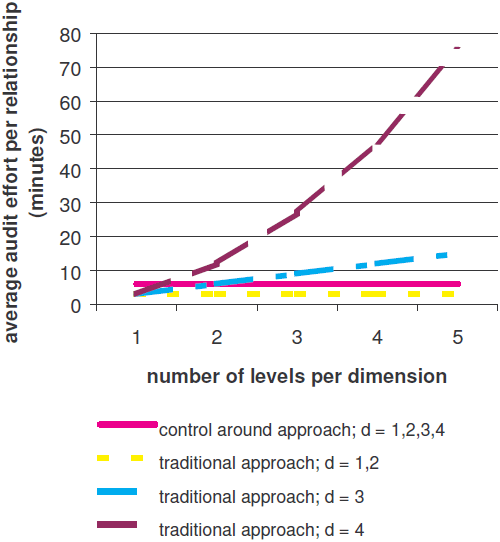Authors
Harmen Ettema, Paul Janssen, & Jacques de Swart
Abstract
The traditional approach to spreadsheet auditing generally consists of auditing every distinct formula within a spreadsheet. Although tools are developed to support auditors during this process, the approach is still very time consuming and therefore relatively expensive.
As an alternative to the traditional 'control through' approach, this paper discusses a 'control around' approach. Within the proposed approach not all distinct formulas are audited separately, but the relationship between input data and output data of a spreadsheet is audited through comparison with a shadow model developed in a modelling language. Differences between the two models then imply possible errors in the spreadsheet.
This paper describes relevant issues regarding the 'control around' approach and the circumstances in which this approach is preferred above a traditional spreadsheet audit approach.
Sample

Suppose that the model has d dimensions, and that every dimension has the same number of levels.
Furthermore, we assume that, due to the copying of the data to the modelling environment, the cost of auditing one relationship via the control around approach is twice as expensive as auditing one distinct formula via the traditional approach.
This graph shows the average effort of both approaches for auditing one relationship that involves all dimensions versus the number of levels for d = 1,2,3 and 4, under ceteris paribus conditions.
From this graph it is clear that for higher values of d, the control around approach becomes less time consuming than the traditional approach for increasing values of the number of levels per dimension.
Publication
2001, EuSpRIG
Full article
Spreadsheet assurance by 'control around' is a viable alternative to the traditional approach
